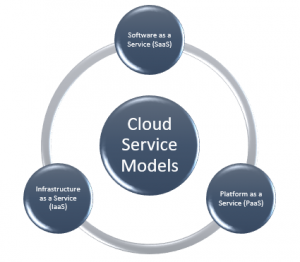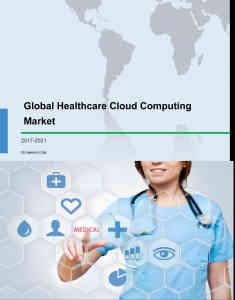In recent times, cloud computing is perhaps one of the few areas in the IT sector which has managed to garner an immense amount of interest and awe, from businesses across various industry verticals. Cloud computing has not only redefined how data can be stored but also popularized the concept of a common shared data center infrastructure and scaled down the costs involved in data management.
Disruptive technology that cloud computing is, it comes with its own set challenges which have resulted in the emergence of ‘edge computing’. But before we go into what precisely is edge computing all about, it will be interesting to decipher the journey of cloud computing in the areas of healthcare, education, and IT security.
Deciphering cloud services

While a lot has been discussed on how businesses can choose the kind of cloud service model depending on their area of work, hardly did anyone expect cloud computing to redefine the way in which education is being imparted. Right from easy availability of resources, to reaching out to a more diverse student group – cloud computing has taken education to every student who is interested in the learning process. This way, it has brought in a level playing field in the global educational system.
According to our lead analyst in education research technology, Jhansi Mary, cloud computing has enhanced the overall learning experience, by providing easy access to resources to all the stakeholders in the education sector – be it the students, teachers, or parents. As mobile learning and analytics are gaining immense popularity among the student community, the demand for cloud services too has increased drastically. In fact, by providing the digital footprint of students, cloud technology enables the teachers to build a better teaching process – one which is a blend of modern technologies and creates a congenial learning environment for the students.
 In case of health sciences too, the technology has made it rather simple and hassle-free to diagnose and help patients without much investments from the patients’ end. No doubt, cost-effectiveness is one vital advantage of switching to the cloud storage facilities.
In case of health sciences too, the technology has made it rather simple and hassle-free to diagnose and help patients without much investments from the patients’ end. No doubt, cost-effectiveness is one vital advantage of switching to the cloud storage facilities.
But, there is clearly more to cloud computing than just making processes uncomplicated. And, often the layman is awed by the advantages of this one technology, that its inherent loopholes are not given as much importance.
Making sense of hurdles in the cloud technology
Non-transparent cloud
Today when transparency in the work process has turned out to be the rule of the day, cloud service providers often fail to give out information on operations, processes, controls, and methodologies. One of the best examples is how most cloud customers have no clue about the storage locations of their data, on how their data is segregated within the cloud, or the controls which secure their cloud computing architecture.
Integration issues
Contrary to popular belief the enterprise risk management (ERM) programs are usually the same for the customers and the cloud service providers. The difficulty faced in integrating the ERMs is the major reason behind this situation. It has been observed that only in cases of high-value contracts the cloud service providers make an effort to integrate parts of their ERM programs with those of their customers.
Lethal cyber-attacks and data leakage risks
Though cloud storage services are cost effective, what businesses tend to forget is that they share the same platform with other enterprises as well. This exposes them to a higher risk of cyber-attacks. A cluster of organizations is obviously a more attractive target when compared to a single organization. Thus, the chances of being targeted in cyber-attacks is at a all-time high.
Also, as organizations share resources, the chances of data leakage are even higher when one opts for cloud computing services. The multi-tenant cloud environment raises questions about data privacy as well as brings the confidentiality angle into consideration. The situation turns little complex, given that every country has its own set of privacy and compliance laws. For instance, the EU Data Protection Directive, PATRIOT Act of the USA, and the Personal Data Protection Act of Malaysia.
Is edge computing the silver lining in the cloud story?
Just when the IT industry was grappling with the loopholes in the cloud technology, came the famous statement from Peter Levin on the “end of cloud computing” as we know it. Once regarded as the holy grail of the computing world, the cloud apparently left many in a fix and looking out for better storage and business solutions. Thus, there is a need to step out of the cloud and move towards the edge – or so to say edge computing.
Edge computing, simply put, is decentralizing of our computer services, and rather moving closer to the actual source of data. IoT is the major driver of edge computing. No doubt this is a paradigm shift in the way in which data will be shared between devices and applications. Already Mimik has come up with a fully developed edge cloud platform which solves many of the existing challenges in the centralized cloud computing system.
Industry experts hold the opinion that distributed edge cloud is the best solution to improve business efficiency through the use of real-time data. Along with revolutionizing the computing world, and inculcating the culture of transparency, edge computing is also expected to provide the much-needed digital freedom to its consumers.
From centralized data storage solution to a decentralized one, from in the cloud to moving to the edge – the computing world is on the brink of witnessing another major disruptive force. The cloud story has not ended, rather it has only evolved towards many more sunny days.



